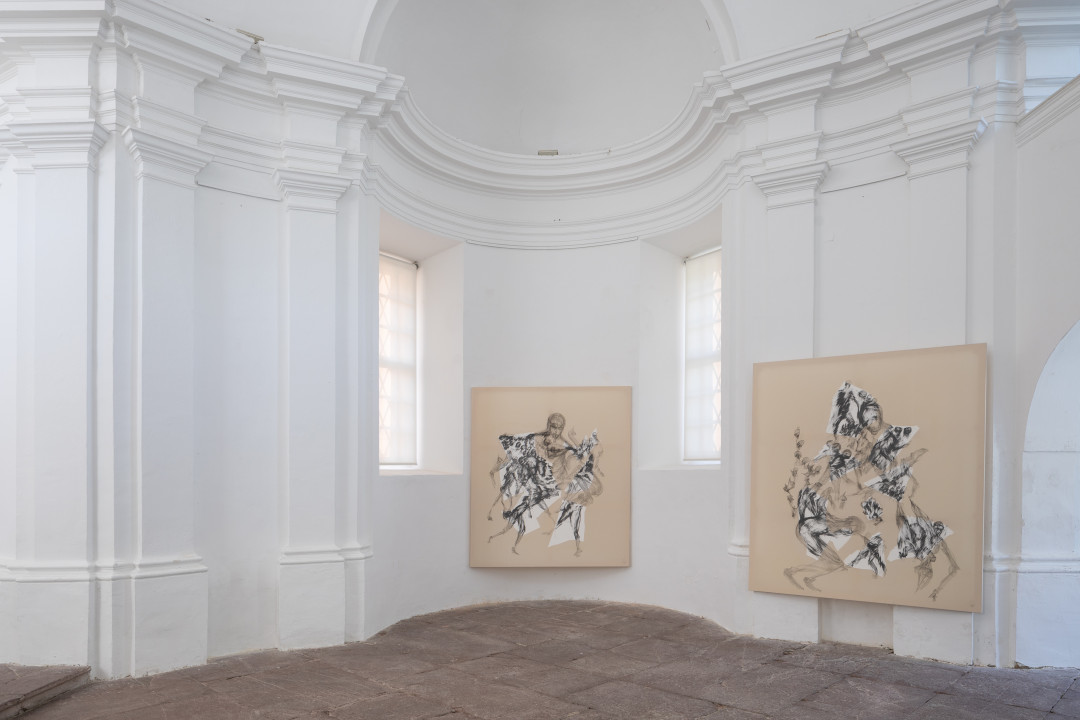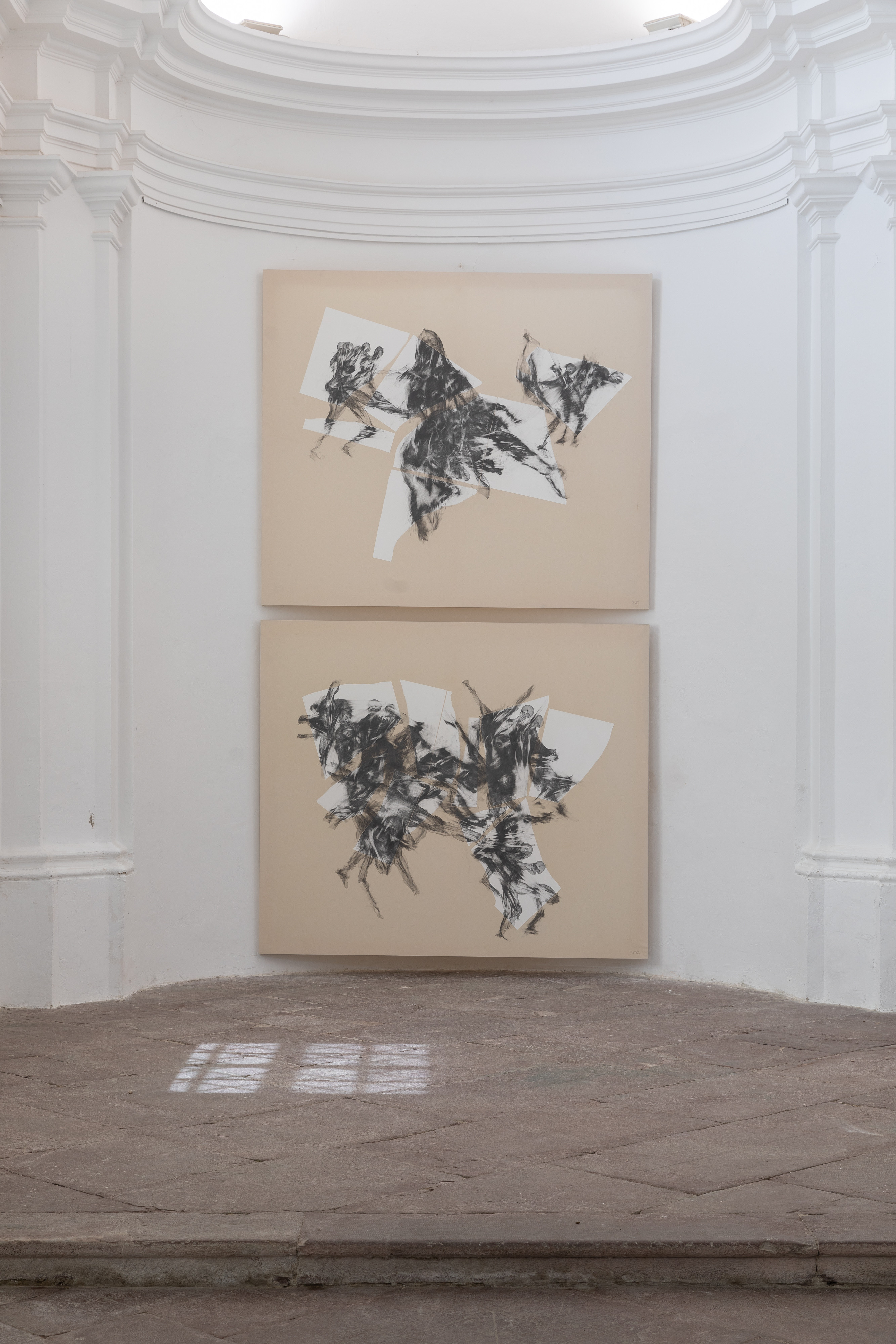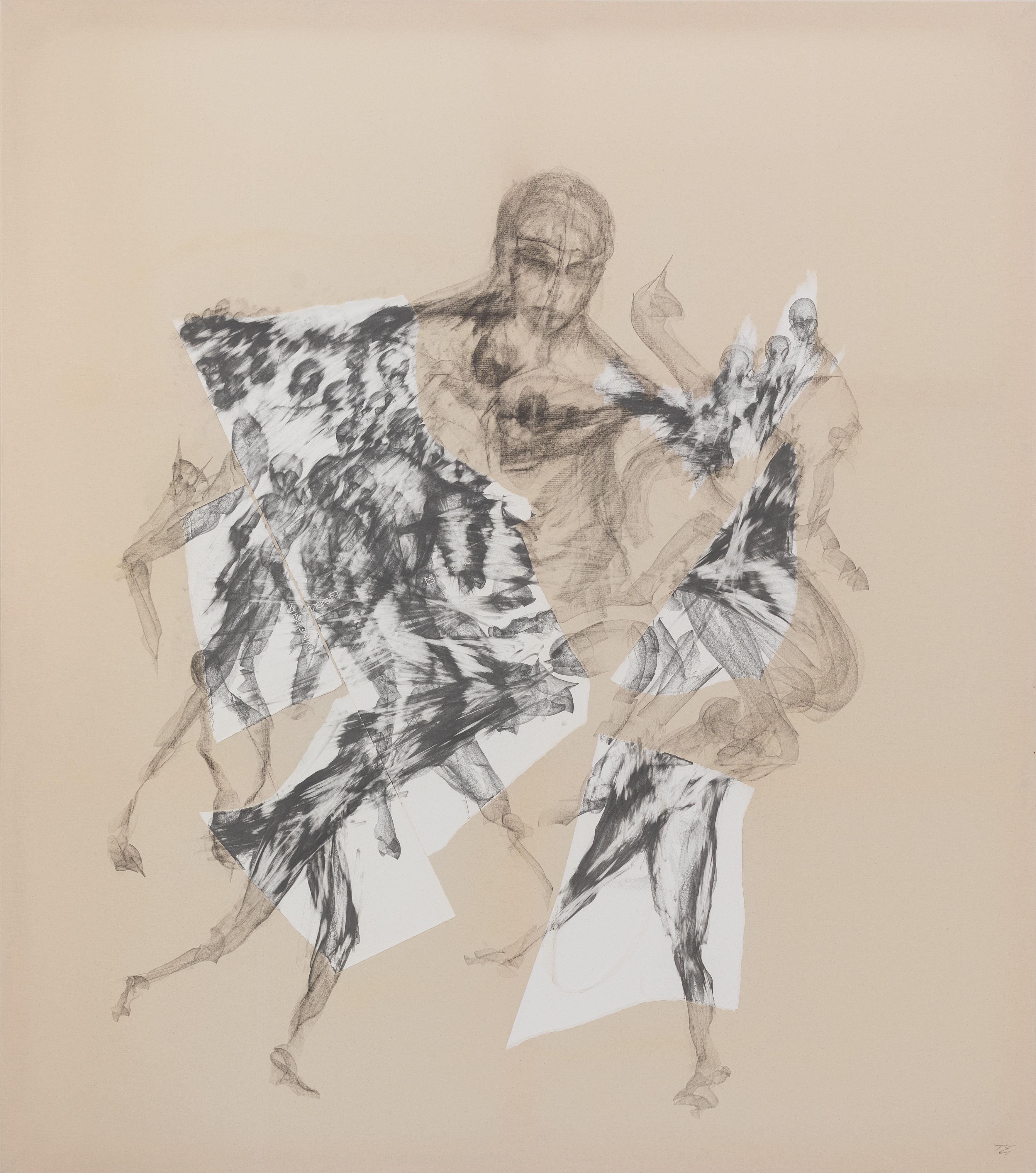Tilen Žbona is a visual artist of the middle generation with a BA and MA from the Academy of Fine Arts in Venice. He received the Award for Significant Artworks in Video and New Media from the Academy of Fine Arts and Design, University of Ljubljana, in 2011, and a PhD from the Faculty of Education in Ljubljana in 2017. He is currently Associate Professor at the Faculty of Education in Koper, where he lives and works.
Žbona brings his work to life in various artistic media. He has been exploring new media practices for many years – something he never abandoned[1] – and with his new series, he again returns to his rudimentary means of expression – classical painting, which he attempts to translate into a contemporary visual language. He approaches painting with a metier aplomb and an intellectual conception of the image, which, as he says, "represents the thoughts generated by represented – presented images, truths – introspection, dissection, disintegration of physiological givens, of haptic experience into the habituation of a newly constructed reality [...]".[2] In this way, he seeks answers to the questions: What are the physiological, cognitive and sociological capacities of reception and appreciation of a work of art? What are the cultural and moral values of what is seen and how are they transmitted to the viewer?
At Krško Gallery, he presents a series of large-scale paintings (185 x 215 cm) created in 2022 and 2023. They are read as a representation of time and the individual's will to create an image, to construct it and mentally control the act of representation at a time when social interactions are subordinated to a distinct technological imperative. These are mixed-media paintings, a collage of materials and pen marks that the artist fuses into a final artwork through the creative process. In addition to the canvas mounted on a wooden stretcher, he uses graphite pencils and paper, which he sticks to the ground in randomly shaped pieces. By choosing his primary drawing device, he tries to get closer to the primal emotions (i.e. anger, anticipation, joy, confidence, fear, surprise, sadness and disgust) but does not underline them with synonyms of colour, as one might expect. The works are monochromatic due to the painter's careful choice of tools, with the warm colour hue given by the yellowish beige of the canvas, which the painter intentionally leaves untouched at the edges of the painting.
The artist's works are painterly derivations of modernist styles typical of the Italian art milieu, such as Suprematism, Futurism and Arte Povera, in a complex interplay with figuration, which, in the words of art critic Dejan Mehmedović, is reminiscent of "[...] tradition in the form of the figure of the rebel Tone Kralj, the suggestiveness of the emotional delirium of the camp corpses of Zoran Mušič, the unbridled energy of the form of Jakov Brdar...".[3] The artist himself confirms that the figures depicted are not dead, they are not a memory of a historical or intimate event, but new images, automata inherent in man, which the artist translates into a material image through a complex, refined pictorial language.[4] The figuration at hand, abstracted in rhythmic doubling and tripling, has no individuality and is meant to represent movement. The artist has depicted movement in certain sequences as if frozen, with the intention of showing the human figure in this moment and the next.
The stylistic figures with their gnarled limbs, elongated bodies and hollowed skulls show that they are modelled on the human body. They are anatomically clearer when painted on canvas and more indeterminate when continued on paper. Here the gestures are faster, more restless, suggesting that this is a multi-layered representation of the same individual in convulsive states of mood. The figures swirl and flow into each other in an orderly composition, creating a representation of the human psychological state. The staged spacelessness through which the figures move also adds to this, suggesting that this is a depiction of the existential plight of the individual who, suspecting that technological progress is causing the dehumanisation and disintegration of the individuum, pauses his movement and looks back, while at the same time being sucked and propelled forward into the inexorable maelstrom of progress.
The interplay of the listed impressions and a deeper study of art[5] merge in Žbona's work into a contemporary painterly interpretation, which for him does not mean "[…] compromise or lack of experiential impulses". [In Žbona's case] we are not concerned with postmodern addition or recycling of processes, but with the freedom of combination, with a truly open arrangement of elements, without fear that the result will be given a neo, post or other prefix."[6] At first glance, his paintings appear drawn, perhaps because of the use of graphite and the way the scene is constructed to give the impression of spacelessness. The edges of the painted format do not frame the scene, which takes place in the middle of the canvas and dissolves towards the edge but never reaches it.
Žbona's paintings create what he calls untold stories. Through painting, he discovers the narration in the unconscious. Here, an unfinished or "unintended" narrative is created, which is discovered, completed and named (or told) on his behalf by the viewer. The artist creates tension through a dialogue between the immaterial background and the condensed details, the enactments of the human condition that are read as illustrations of movement, change, transformation and the search for a position between "being and not being in the world". The constant bombardment of information reaching the individual through sophisticated technological devices – which even select the information that the user would find interesting – has led to second thoughts about how to find answers to the questions of what is right, what is next, what is real.
Perhaps we can draw insights from the exhibited paintings of Tilen Žbona, whose form implements futuristic ideas. These equated time with reality and perceived what man would be in the future as real. Time is the constant that, no matter what happens, will inevitably occur. After a certain amount of time, tomorrow will surely come. Only what it will bring to the individual remains uncertain, and therein lies his powerlessness. The artist's works are therefore a response to the current anxieties of the individual, triggered by an increasingly volatile socio-political situation that raises primary questions about life and death, and through this experience also about arriving and departing.
Bibliography and sources:
Mehmedović, D. (2020). Slikarska dela Tilna Žbone [The Paintings of Tilen Žbona]. In Tilen Žbona: ChartaZa/InternalClutter: slikarska dela [exhibition catalogue], pp. 3–7. Izola, Društvo likovnih umetnikov Insula.
Sotelšek, N. (2023). Field notes, telephone conversation with Tilen Žbona (unpublished material). Krško, 9. 8. 2023.
Špoljar, M. (2021). Tilen Žbona: Demagogical Moon from 1979: Hommage to Bernardo Bertolucci's Luna. Labin: Gradska galerija Labin.
[1] In 2021, he participated in the intermedia exhibition Polyleg 0.1 – time matrix of depiction, which dealt with the artistic presentation of artificially constructed forms based on the scientific perception of data and image databases. He is currently working on the materialised presentation of digitised sound recordings.
[2] Sotelšek, 2023.
[3] Mehmedović, 2020: 6 and Špoljar, 2021: [13].
[4] Sotelšek, 2023.
[5] The artist refers to the art of Lucian Freud, Francis Bacon, Zoran Mušič, Anselm Kiefer and others.
[6] Špoljar, 2021: [11].






